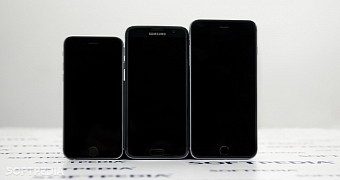Apple has recorded the first iPhone decline in history and while Cupertino doesn’t seem to be affected in a significant manner, there are other companies in the industry that are already suffering bigger losses because of dropping sales of Apple’s flagship device.
One of them is Japan Display, one of the companies that are building display panels for iPhone and iPad, as it revealed on Tuesday a drop of nearly $300 million. The reason is none other than declining demand for Apple products, as Japan Display is focusing specifically on production for Apple devices.
A report by the Wall Street Journal and citing sources close to Japan Display’s future plans reveal that the company is hoping to go back to growth when Apple makes the switch to OLED displays. Details for this transition to OLED are still scarce at the moment, but the Japanese company is expected to be one of the main manufacturers of new panels once the iPhone switches to this type of screens.
The move could happen in 2017 at the earliest
And while it makes sense for Japan Display to put big hopes in Apple’s transition to OLED displays, it’s also a sign that even the company’s partners are hoping to see the company upgrading its devices with newer technology that would significantly boost sales and bring the iPhone back to growth.
People with knowledge of the matter previously revealed that Apple was planning to launch an OLED display on its iPhone lineup in 2018, while more recent reports claim that such an upgrade is possible as soon as 2017.
The next iPhone to see daylight is the iPhone 7 landing in September, but for the moment, all signs seem to point that it’ll use the same LCD screens as the current 6s models. Furthermore, it’s believed that the 2017 iPhone would stick to the LCD display before Apple would finally embrace OLEDs one year later.
It goes without saying that Apple’s late to the party with the transition to OLED, as companies building Android devices, including Samsung, have had this technology for years. Samsung, which is one of Apple’s main rivals, is already offering organic light-emitting diode screens on all its devices, whereas Cupertino prefers to stick with the LCD display for a little longer in search for a more energy-efficient solution.

 14 DAY TRIAL //
14 DAY TRIAL //